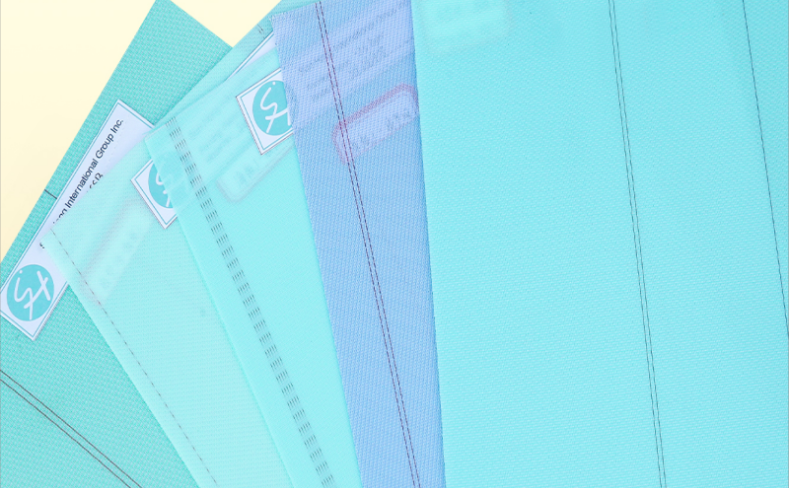
The forming fabric is the key equipment that carries the paper forming, dewatering and wet paper web transfer. The forming fabric plays a decisive role in the quality of the paper and the stable operation of the paper machine. Therefore, it is necessary to understand the forming fabric and its parameters and indicators.
structure:
The more common classifications of forming fabrics are
(1) Single layer forming fabric, suitable for making kraft paper, tissue paper, writing paper and printing paper, and suitable for low-speed paper machines.
(2) Due to the addition of extra yarns, the 1.5 layer forming fabric has the same performance as the double layer forming fabric, improving the smoothness of the side edges of the paper and improving the air permeability and service life compared to the single layer forming fabric. Suitable for corrugated paper, kraft paper and board paper machines
(3) The weft yarn of the double layer forming fabric has a double layer structure, has excellent dehydration performance and improves the retention rate. Suitable for medium and high-speed paper machines to make cardboard, new paper, packaging paper, printing paper, etc.
(4) The 2.5 layer forming fabric is widely used in the market. It adopts a double-layer design. an extra Shute yarn is added between the two conventional transverse yarns on the forming side to have better support and dehydration performance, and is suitable for vehicle speeds. Paper machines with a speed of 200-500m/min are suitable for making printing paper, newsprint, packaging paper, etc.
(5) The triple layer forming fabric adopts a three-layer weft yarn structure, which has a better service life, strengthens the lateral stability of the machine, improves water filtration capacity, and reduces line marks. The triple layer forming fabric can retain fibers to the maximum extent and is suitable for high-speed paper machines to produce high-end printing paper, tissue paper, cigarette series paper, etc.

Forming Fabric surface smoothness:
The flatness of the mesh surface has an impact on the flatness, double-sided inspection and smoothness of the paper on the reverse side of the wet paper web. Generally speaking, the more fiber support points there are, The smaller the difference in thickness of the longitude and latitude lines of the surface layer, and the more uniform the overall distribution. the better the flatness of the forming fabric, and the better the smoothness and fineness of the corresponding paper.
Thickness of longitude and latitude:
At present, the forming fabric used in high-speed paper machines is basically 2.5 or triple layers. For the forming fabric, the smaller the thickness of the longitude and latitude lines used on the surface, the more delicate the paper surface will be. Choosing thicker threads for the bottom weft can ensure the wear resistance of the forming fabric.
Breathablilty:
Generally speaking, the air permeability is CFM, which means the total amount of air passing through one square foot per minute under 125Pa air pressure. The higher the air permeability, the better the water filtration performance of the slurry.
Fiber support points:
The number of fiber support points refers to the number of latitude and longitude points supporting fibers within one centimeter per square meter on the front side of the forming fabric. Generally speaking, the greater the number of fiber support points, the higher the retention rate of fibers and ash in the paper.
Longitudinal and transverse stiffness:
It can reflect the anti-deformation ability of the forming fabric. The higher the stiffness, the better the anti-deformation ability and the better it is for the operation of high-speed paper machines. The higher the longitudinal stiffness, the less likely it is for the forming fabric to deviate during operation; the higher the transverse stiffness, the less likely it will be buckled during operation.

